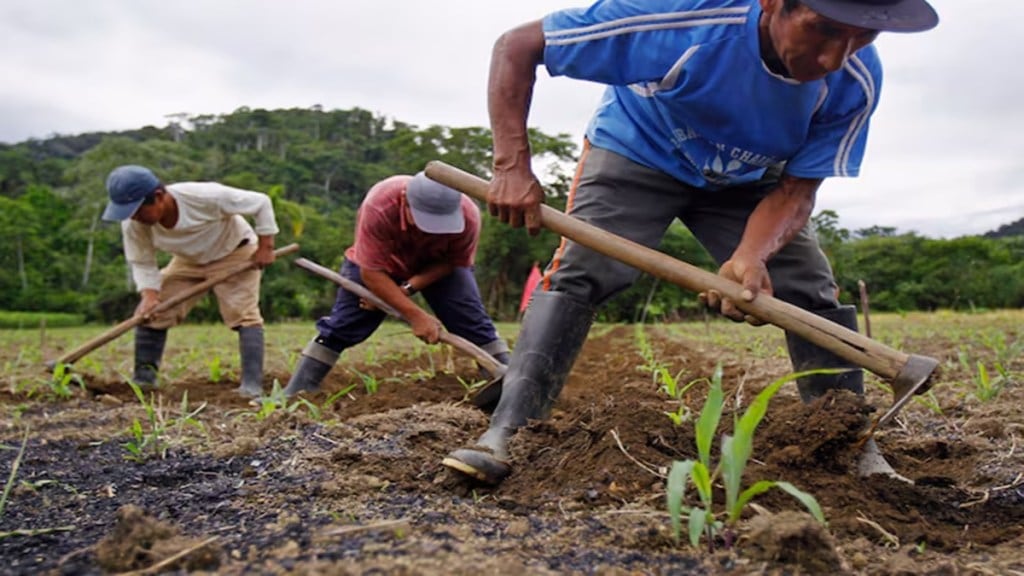A series of RBI working papers on food inflation says that tomato, onion and potato farmers get a raw deal despite seasonal spikes in prices. In contrast, those growing pulses or rearing poultry are better off. FE looks at the reasons behind this and how farmers’ incomes can be enhanced
Findings of the RBI papers on the remuneration to farmers
The four RBI working papers focused on the value chains of vegetables — tomato, onion and potato (collectively known as TOP crops), fruits — grapes, bananas and mangoes, livestock — milk, poultry meat and eggs, and pulses — gram, tur and moong. In the case of fruits and vegetables, farmers get a low to moderate share in the range of 31% -43% in the consumer rupee. In case of pulses and livestock, farmers’ realisation is much higher at 65% – 75% of the consumer rupee. During periods of high inflation, middlemen and retailers capture a significant portion of the price paid by consumers for fruits and vegetables, as per the working papers. This results in lower earnings for farmers. Spike in food inflation in recent months has been solely attributed to the rise in prices of tomato, onion and potato which have a weightage of 0.6%, 0.6% and 1% in the Consumer Price Index inflation respectively. The total vegetable basket has a weightage of 6.04% in the CPI.
Reasons for the lower realisation in case of tomato, onion & potato
A key reason for the farmers’ lower realisation in case of TOP vegetables is that it lacks an efficient value chain system and is highly fragmented. This is due to the perishable nature of the crop, regional and seasonal concentration, lack of adequate storage facilities, and presence of a large number of intermediaries. Agricultural Produce Marketing Committees (APMCs) markets are administered by respective states, which fix mandi fees, official commission charges, and user charges. An analysis of farmers’ share in consumer rupee for the three vegetables suggests that farmers are getting around only one third of the price that a consumer is paying; the rest is apportioned by the wholesalers and retailers. As vegetables are perishable commodities, private mandis can provide a wider platform to farmers to sell their commodities.
A better deal for dairy & poultry farmers
On an average, 70% and 75% of the consumer rupee goes back to the dairy and egg farmers, respectively, whereas 56% of the consumer rupee goes back to the farmers and integrators in the poultry meat value chain. The livestock sector exhibits seasonal variation in production as well as consumption. In the case of the egg value chain, farmers’ share of the consumer rupee varies from 69% in summer to 89% in winter due to seasonality in the demand. Religious festivals also adversely impact demand for meat and eggs.
Despite milk being a perishable commodity, farmers’ share in the consumer rupee is higher due to efficient value chains developed by dairy cooperatives and private organised players who procure milk from the farmers at the village level and store it in chilling plants. Similarly, around 80% of the poultry (broiler meat) and egg (layer birds) industry is now managed by integrators like Suguna, Venkateshwara Hatcheries and IB Group who provide farmers with broiler birds and other inputs through buy back arrangement which largely insulate farmers against price fluctuations.
Price realisation in pulses
Farmers get a larger share of the consumer rupee for pulses as compared to vegetables and fruits as these have a relatively longer shelf life. This renders pulses stock as an important determinant of price movement. Recent years have seen price spikes due to demand-supply gap, despite the country being the largest producer of pulses in the world. When domestic production falls, the government stabilises supply and price pressures by liberalising imports. It also ensures continued remunerative prices for farmers through assured procurement at minimum support price (MSP) to create buffer stocks. India imports mostly tur, urad and masoor (lentils) and imports would be around 15% of the total consumption of 26-27 million tonne.
How can the value chains be improved?
In order to enhance incomes of TOP farmers, the working papers have suggested allowing private mandis (wholesale markets) besides stepping up electronic linking of the government’s digital wholesale market — National Agriculture Market (e-NAM) — with the thousands of APMCs and their sub-yards to enable farmers and traders to trade online. As mostly small and marginal farmers grow vegetables, scaling up farmer collectives via Farmers Producers Organisation (FPOs) and empowering them with incentives may help increase their bargaining power. Relaunching of potato futures trade in commodity exchanges and launching futures trading in onion especially for the rabi variety can be explored for optimal price discovery. The operational efficiency of the dairy industry can be improved by creating a more efficient value chain through dynamic milk procurement methods, strengthening of the cooperative and organised sectors, besides creating a feed bank and increasing fodder productivity.
